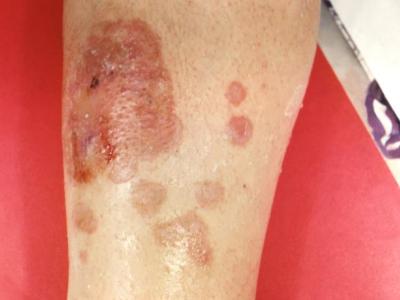Analysis links outpatient penicillin prescribing with sepsis mortality rates
A new study by researchers from Harvard TH Chan School of Public Health suggests that outpatient prescribing of penicillins is associated with rates of mortality with sepsis in older US adults.
The study, published in BMC Infectious Diseases, used a multivariable mixed-effects model to relate state-specific rates of outpatient prescribing for oral fluoroquinolones, penicillins, macrolides, and cephalosporins in 2014 and 2015 to state-specific rates of mortality with sepsis in different age-groups of US adults in the same years, adjusting for additional covariates and random effects associated with 10 US Department of Health and Human Services regions. The aim was to see whether use of different antibiotics in the community might be linked to rising rates of hospitalization with sepsis and associated mortality.
The results of the analysis suggest a positive association between rates of outpatient prescribing of oral penicillins and rates of mortality with sepsis in individuals aged 75 to 84 years and those 85 and older.
An increase in the rate of prescribing of oral penicillins by 1 annual dose per 1,000 state residents was associated with increases in annual rates of mortality with sepsis of 0.95 (95% confidence interval [CI], 0.02 to 1.88) per 1,000 persons aged 75 to 84 years, and 2.97 (95% CI, 0.72 to 5.22) per 1,000 persons over 85. Additionally, the percent of individuals among those aged 50 to 64 who lacked health insurance and the percent of individuals aged 65 to 84 who were African-American were both associated with higher rates of mortality with sepsis in the corresponding age-groups.
The authors of the study note that the findings support the results of a previous analysis that showed an association between the use of penicillins and rates of septicemia hospitalization in older US adults, and are also in agreement with the fact that prevalence of resistance to penicillins, particularly in older adults, is high for a variety of gram-negative and gram-positive infections.
They conclude, "While these findings support the potential utility of replacement of penicillins by other antibiotics with the goal of reducing the rates of sepsis and associated mortality, further studies, including individual-level analyses are needed to better understand the effect of replacement of certain antibiotics, particularly penicillins by other antibiotics in the treatment of different syndromes, well as the effect of reduction in antibiotic prescribing in the treatment of certain conditions on the rates of severe outcomes associated with bacterial infections."
Feb 22 BMC Infect Dis study
Rapid test for tigecycline resistance genes performs well in lab study
A simple, rapid, and cost-effective assay for detecting genes that confer high-level resistance to tigecycline showed high sensitivity and specificity in lab tests, Chinese researchers reported today in the Journal of Antimicrobial Chemotherapy.
The assay, called the tetracycline inactivation method (TIM), was developed to detect the tet(X3/X4) genes, which are present on mobile plasmids and can directly inactivate tetracycline antibiotics, including the newly approved eravacycline and omadacycline. The test uses Bacillus stearothermophilus as the indicator strain, coupled with a pH-sensitive dye (bromecresol purple), to determine the production of tet(X3/X4) in bacterial strains. If the test strain carries the plasmid-encoded tet(X3/X4) genes, eravacycline will be degraded, allowing the growth of the susceptible indicator strain, and a yellow colorimetric zone will develop; otherwise, the color will be purple.
To evaluate the TIM assay, researchers from South China Agricultural University tested it on 118 isolates obtained from feces, soil, dust, sewage, and vegetable samples, including 30 tet(X4)-positive Escherichia coli, 30 tet(X3)-positive Acinetobacter spp., and 58 tet-negative E coli and Acinetobacter spp. The results showed the sensitivity and specificity for E coli carrying tet(X4) was 96.7% and 100%, respectively, while sensitivity and susceptibility for Acinetobacter spp. carrying tet(X3) were both 100%. The assay can be completed in 6.5 hours.
"Overall, the high sensitivity and specificity of TIM combined with its rapid readout make it a useful tool in clinical microbiology laboratories for the detection of plasmid-mediated high-level tigecycline resistance in E. coli and Acinetobacter spp.," the authors of the study write. They add that evaluation off the assay in clinical samples is worth further study.
Feb 24 J Antimicrob Chemother study
FDA grants breakthrough status to lysin therapy for MRSA bloodstream infections
Biotechnology company ContraFect Corporation, of Yonkers, New York, announced today that the US Food and Drug Administration (FDA) has granted Breakthrough Therapy designation to execabase, a recombinantly produced lysin, for the treatment of methicillin-resistant Staphylococcus aureus (MRSA) bloodstream infections.
According to a company press release, the designation was based on results of a phase 2 superiority trial that evaluated whether the addition of execabase to standard-of-care (SOC) antibiotic therapy in patients with S aureus bloodstream infections improved clinical response rates compared with SOC antibiotic therapy alone. In a pre-specified analysis of the subgroup with MRSA infections, the clinical responder rate at day 14 among exebacase-treated patients was 42.8 percentage points higher than the responder rate among patients treated with SOC antibiotics alone (74.1% vs 31.3%, respectively, P = 0.010).
Treatment with exebacase was also associated with a 21-percentage-point reduction in the 30-day all-cause mortality (P = 0.056), a 4-day reduction in length of hospital stay, and meaningful reductions in 30-day hospital readmission rates in MRSA-infected patients.
"The decision by the FDA to grant Breakthrough Therapy designation to exebacase recognizes the urgent need for new therapies that can impact the lives of patients with these MRSA infections," ContraFect President and CEO Roger Pomerantz, MD, said. "Based on the Phase 2 data, we believe exebacase could be the first anti-infective agent to demonstrate superior outcomes for these patients."
Execebase is the first lysin to enter human clinical trials in the United States. It works by targeting the peptidoglycan cell wall, which is vital to S aureus bacteria.
Breakthrough Therapy designation expedites development and review of drugs for serious or life-threatening diseases that have provided preliminary clinical evidence that they may demonstrate substantial improvement over available therapies on at least one clinically significant end point.
Feb 24 ContraFect press release













